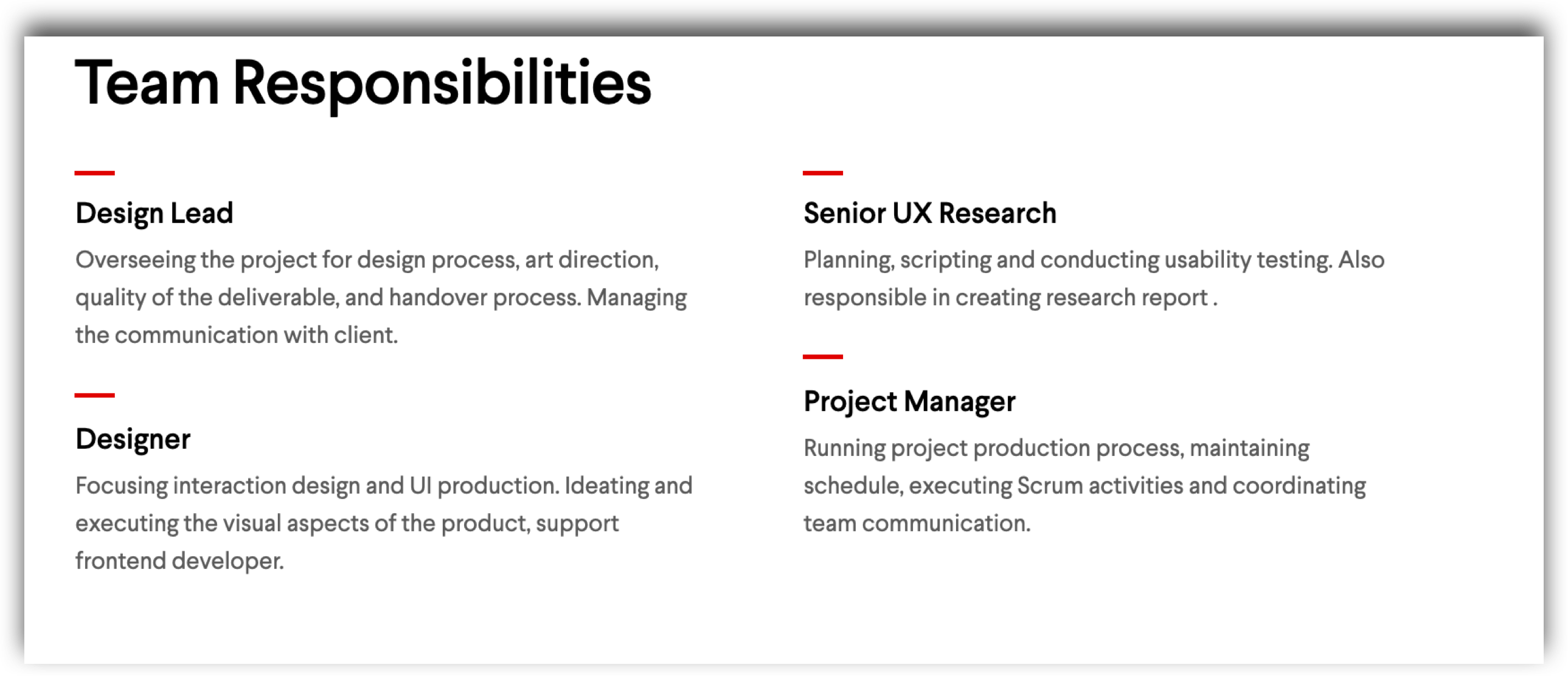¶ Roles & Responsibilities
¶ What it is
Besides the general understanding of stakeholders and relevant parties, clarifying roles and responsibilities means identifying the team setup and assigning the duties to the proper team members, making sure everyone knows their job and scope of responsibilities during the project.
In short, roles refer to a person’s position in a team, while responsibilities are the duties and tasks of the roles.
¶ Why it is useful
A project can be executed efficiently only when the roles and responsibilities are crystal clear. Everyone should understand their tasks to perform efficiently. Also, people must quickly find the right person to decide on or resolve issues. The persons in charge are the ones recognised as those who know the objectives the best and can make the best decisions.
Besides, clear roles and responsibilities help with the following aspects:
Project ownership, budget control, project planning, performance assessment, deadline adherence, etc.

¶ How is it done
1. Identify the members in three levels
Project managers, team leaders, team members
2. Identify skills based on needs
Depending on the different roles, soft or technical skills are necessary to fulfil their responsibilities
3. Estimate work efforts
Roles and responsibilities are always bound to workload and time frame to evaluate if the project can be successfully delivered
4. Assign roles with responsibilities
With the roles and skills clarified, it is recommended to recruit the team leads first so that the leads will be able to select the team members
5. Set expectations
Set up the communication and reporting lines, announce the responsibilities together with the team setup
¶ Do's & Don't
Do's
- Understand the project goal and define the needed skills and teams first before going deep to find the exact team member.
- Bear in mind the budget, project timeline, and team setup.
- Confirm each team leader first so the leaders can help choose appropriate team members in their fields.
- Try to avoid overlapping responsibilities in different roles.
Don't
- Don’t set vague responsibilities.
- Don’t set up too many leadership positions in the same team.
- Don’t change roles and responsibilities frequently.
¶ Tools needed
- Miro
- Excel
- Powerpoint
- Etc.
¶ Example
Here is a checklist example of common dependencies. It’s important to go over the possible dependency checklist ahead of the project and plan the coordination in advance. However, the types in the real world are not limited to this example.
